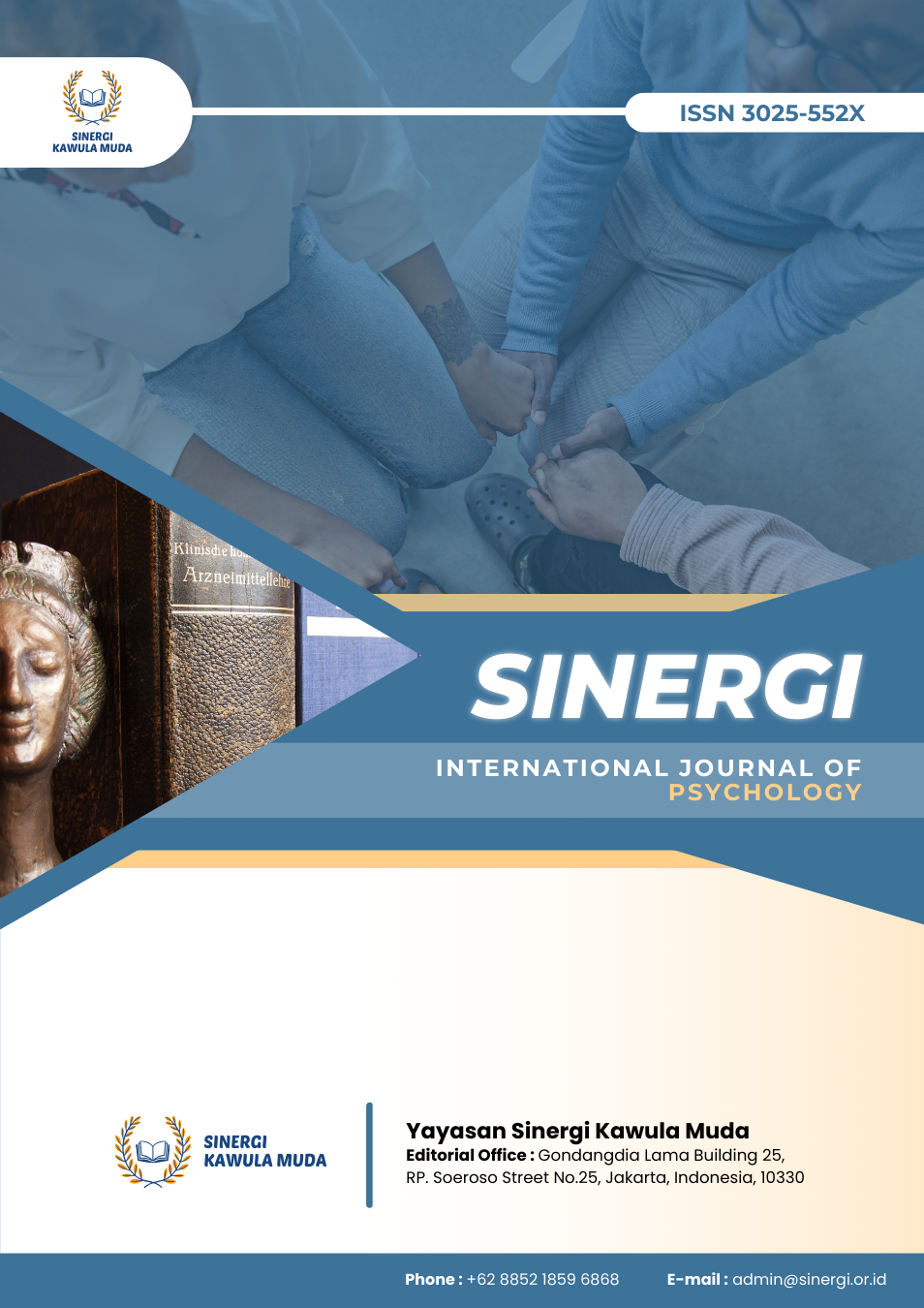Structural Barriers and Inclusive Solutions to Urban Isolation
DOI:
https://doi.org/10.61194/psychology.v3i1.692Keywords:
Social Isolation, Urban Communities, Community Psychology, Urban Planning, Mental Health, Public Policy, Inclusive CitiesAbstract
Urban social isolation has emerged as a pressing global public health concern, driven by the interplay of social, psychological, and environmental determinants. This narrative review aims to synthesize contemporary evidence on the causes, impacts, and mitigation strategies for social isolation in urban settings. The literature was collected from PubMed, Scopus, and Google Scholar using a combination of keywords related to social isolation, urban design, and community psychology. Inclusion criteria emphasized peer-reviewed empirical studies focused on urban populations, with a preference for mixed-method and interdisciplinary approaches. Findings reveal that fragmented community networks, psychological distress, and inadequate access to safe and inclusive public spaces consistently exacerbate urban isolation. Vulnerable populations—particularly the elderly, migrants, and LGBTQIA+ individuals—are disproportionately affected, often facing systemic barriers such as economic inequality, housing insecurity, and social exclusion. The review underscores the role of participatory community interventions, equitable urban planning, and policy integration in addressing the root causes of isolation. Global best practices demonstrate that inclusive urban infrastructure, cross-sector collaboration, and technology-enabled outreach can significantly enhance social connectivity. This review concludes that urban social isolation must be tackled through systemic reforms, locally tailored interventions, and inclusive public policies. Recommendations for future research include longitudinal studies and mixed-method evaluations that account for intersectional identities and structural inequities. The synthesis offers a holistic framework to guide policymakers, practitioners, and researchers in developing sustainable urban communities that prioritize social cohesion and mental well-being.
References
Balakrishnan, R., Kaplan, B., Negron, R., Fei, K., Goldfinger, J., & Horowitz, C. (2017). Life after stroke in an urban minority population: a photovoice project. International Journal of Environmental Research and Public Health, 14(3), 293. https://doi.org/10.3390/ijerph14030293 DOI: https://doi.org/10.3390/ijerph14030293
Chen, M., Cao, X., Wang, A., Zhu, Y., Lu, G., Li, Z., … & Shen, L. (2024). A global perspective on risk factors for social isolation in community-dwelling older adults: a systematic review and meta-analysis. Archives of Gerontology and Geriatrics, 116, 105211. https://doi.org/10.1016/j.archger.2023.105211 DOI: https://doi.org/10.1016/j.archger.2023.105211
Dunne, A., Quirk, H., Bullas, A., & Haake, S. (2024). ‘my parkrun friends.’ a qualitative study of social experiences of men at parkrun in ireland. Health Promotion International, 39(3). https://doi.org/10.1093/heapro/daae045 DOI: https://doi.org/10.1093/heapro/daae045
Ejiri, M., Kawai, H., Fujiwara, Y., Ihara, K., Watanabe, Y., Hirano, H., … & Obuchi, S. (2019). Social participation reduces isolation among japanese older people in urban area: a 3-year longitudinal study. Plos One, 14(9), e0222887. https://doi.org/10.1371/journal.pone.0222887 DOI: https://doi.org/10.1371/journal.pone.0222887
Finlay, J. and Kobayashi, L. (2018). Social isolation and loneliness in later life: a parallel convergent mixed-methods case study of older adults and their residential contexts in the minneapolis metropolitan area, usa. Social Science & Medicine, 208, 25-33. https://doi.org/10.1016/j.socscimed.2018.05.010 DOI: https://doi.org/10.1016/j.socscimed.2018.05.010
Finucane, M., Beckman, R., Ghosh‐Dastidar, M., Dubowitz, T., Collins, R., & Troxel, W. (2022). Do social isolation and neighborhood walkability influence relationships between covid-19 experiences and wellbeing in predominantly black urban areas?. Landscape and Urban Planning, 217, 104264. https://doi.org/10.1016/j.landurbplan.2021.104264 DOI: https://doi.org/10.1016/j.landurbplan.2021.104264
Forte, F., Vieira, N., Farias, S., Barbosa, I., Castro, M., Yousafzai, A., … & Vieira‐Meyer, A. (2024). Quality of life and associated factors for community health workers in the context of the covid-19 pandemic in northeastern brazil. Scientific Reports, 14(1). https://doi.org/10.1038/s41598-024-63828-9 DOI: https://doi.org/10.1038/s41598-024-63828-9
Franck, L., Molyneux, N., & Parkinson, L. (2015). Systematic review of interventions addressing social isolation and depression in aged care clients. Quality of Life Research, 25(6), 1395-1407. https://doi.org/10.1007/s11136-015-1197-y DOI: https://doi.org/10.1007/s11136-015-1197-y
Higginbottom, G., Safipour, J., Yohani, S., O’Brien, B., Mumtaz, Z., Paton, P., … & Barolia, R. (2016). An ethnographic investigation of the maternity healthcare experience of immigrants in rural and urban alberta, canada. BMC Pregnancy and Childbirth, 16(1). https://doi.org/10.1186/s12884-015-0773-z DOI: https://doi.org/10.1186/s12884-015-0773-z
Johnsrud, M., Goth, U., & Skjerve, H. (2024). The impact of urban allotment gardens on physical and mental health in norway. International Journal of Environmental Research and Public Health, 21(6), 720. https://doi.org/10.3390/ijerph21060720 DOI: https://doi.org/10.3390/ijerph21060720
Jouzi, Z., Diego, L., Lewis, N., & Leak, T. (2024). How can transitional housing be improved? insights from residents’ experiences and perceptions in new york city. International Journal of Environmental Research and Public Health, 21(7), 829. https://doi.org/10.3390/ijerph21070829 DOI: https://doi.org/10.3390/ijerph21070829
Kotwal, A., Fuller, S., Myers, J., Hill, D., Tha, S., Smith, A., … & Perissinotto, C. (2021). A peer intervention reduces loneliness and improves socialwell‐beinginlow‐incomeolder adults: amixed‐methodsstudy. Journal of the American Geriatrics Society, 69(12), 3365-3376. https://doi.org/10.1111/jgs.17450 DOI: https://doi.org/10.1111/jgs.17450
Kumar, M., Ruikar, M., & Surya, V. (2023). Depression among older adults in an urban slum of raipur city – a community based cross-sectional study. BMC Geriatrics, 23(1). https://doi.org/10.1186/s12877-023-04402-2 DOI: https://doi.org/10.1186/s12877-023-04402-2
Lapena, C., Continente, X., Mascuñano, A., Pons‐Vigués, M., Pujol‐Ribera, E., & López, M. (2020). Qualitative evaluation of a community‐based intervention to reduce social isolation among older people in disadvantaged urban areas of barcelona. Health & Social Care in the Community, 28(5), 1488-1503. https://doi.org/10.1111/hsc.12971 DOI: https://doi.org/10.1111/hsc.12971
Leavell, M., Leiferman, J., Gascón, M., Braddick, F., González, J., & Litt, J. (2019). Nature-based social prescribing in urban settings to improve social connectedness and mental well-being: a review. Current Environmental Health Reports, 6(4), 297-308. https://doi.org/10.1007/s40572-019-00251-7 DOI: https://doi.org/10.1007/s40572-019-00251-7
Lin, Y., Hu, Z., Alias, H., & Wong, L. (2021). Quarantine for the coronavirus disease (covid-19) in wuhan city: support, understanding, compliance and psychological impact among lay public. Journal of Psychosomatic Research, 144, 110420. https://doi.org/10.1016/j.jpsychores.2021.110420 DOI: https://doi.org/10.1016/j.jpsychores.2021.110420
López, M., Lapena, C., Sánchez, A., Continente, X., & Fernández, A. (2019). Community intervention to reduce social isolation in older adults in disadvantaged urban areas: study protocol for a mixed methods multi-approach evaluation. BMC Geriatrics, 19(1). https://doi.org/10.1186/s12877-019-1055-9 DOI: https://doi.org/10.1186/s12877-019-1055-9
Maccari, A. and Gonçalves, T. (2017). A moradia vertical – um estudo sobre o processo de apropriação da casa e seu entorno sociofísico. Raega - O Espaço Geográfico Em Análise, 42, 179. https://doi.org/10.5380/raega.v42i0.46931 DOI: https://doi.org/10.5380/raega.v42i0.46931
Morandini, J., Blaszczynski, A., Dar‐Nimrod, I., & Ross, M. (2015). Minority stress and community connectedness among gay, lesbian and bisexual australians: a comparison of rural and metropolitan localities. Australian and New Zealand Journal of Public Health, 39(3), 260-266. https://doi.org/10.1111/1753-6405.12364 DOI: https://doi.org/10.1111/1753-6405.12364
Nimegeer, A., Thomson, H., Foley, L., Hilton, S., Crawford, F., & Ogilvie, D. (2018). Experiences of connectivity and severance in the wake of a new motorway: implications for health and well-being. Social Science & Medicine, 197, 78-86. https://doi.org/10.1016/j.socscimed.2017.11.049. DOI: https://doi.org/10.1016/j.socscimed.2017.11.049





